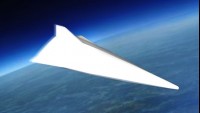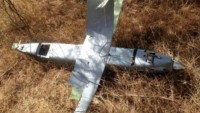China and Russia Oppose US THAAD Deployment to South Korea
| Arthur Dominic Villasanta | | Jul 09, 2016 08:06 PM EDT |
(Photo : US Army) A THAAD missile system on its mobile launcher and what the system can do.
The decision by the United States and South Korea on June 8 to station two batteries of the U.S.' Terminal High Altitude Area Defense (THAAD) anti-missile system in South Korea has been criticized and opposed by both China and Russia, with the latter saying it might deploy more missiles to Asia to counter THAAD.
Like Us on Facebook
The U.S. and South Korea said the THAAD deployment will counter dangers from North Korea's persistent tests of its ballistic missile and nuclear weapons programs. The deployment site for the two THAAD batteries will be announced in the next few weeks.
Yoo Jeh-seung, Deputy Minister for Policy of the Ministry of National Defense, said the THAAD deployment was a "defensive measure" to "protect alliance military forces from North Korea's weapons of mass destruction and ballistic missile threats."
"It will be focused solely on North Korean nuclear and missile threats and would not be directed towards any third party nations," he said.
China claims the deployment of the effective U.S. anti-missile missile exceeds the threat presented by North Korea's ballistic missile program. China's Foreign Minister Wang Yi said the planned deployment of THAAD far exceeds the Korean Peninsula's defense needs.
He said China has reasons and rights to question the behind-the-scenes motives of this move, and any excuse for the deployment would be unjustified. Analysts said the deployment of THAAD would strengthen the United States' already formidable presence in South Korea and in Asia, and would place China's ballistic missile sites within range of THAAD should a war erupt between China and the U.S.
For its part, Russia might deploy more missile systems to Asian Russia, including the Kuril Islands off northeast Japan, said a source close to Russia's foreign minister, Sergei Lavrov.
"The possible responsive measures to a THAAD system in South Korea may include deployment of new striking forces in Russia's Far East. For example, warships of the Pacific Fleet could be equipped with Kalibr missiles," said Leonid Ivashov, president of the Academy of Geopolitical Problems.
The Kalibr missile system is a cruise missile used for land attack, anti-ship missile and anti-submarine missions. It was famously used in October 2015 when Russian warships on the Caspian Sea fired 26 Kalibr-NK missiles at targets (mostly U.S.-allied resistance groups) in Syria.
One THAAD battery will be deployed in South Korea by the end of 2017. It will be under the operational control of the United States Forces Korea (USFK), the joint headquarters through which U.S. combat forces are deployed to the U.S.' and South Korea's combined ground, air, naval, marine and special operations forces component commands.
A THAAD battery consists of six mobile launchers, 48 missiles, airborne radar and fire control system. Its X-band radar can detect missiles 2,000 kilometers away on a forward-based mode and 600 kilometers on a terminal mode.
TagsTerminal High Altitude Area Defense, THAAD, South Korea, china, Russia, United States
©2015 Chinatopix All rights reserved. Do not reproduce without permission
EDITOR'S PICKS
-

Did the Trump administration just announce plans for a trade war with ‘hostile’ China and Russia?
-

US Senate passes Taiwan travel bill slammed by China
-

As Yan Sihong’s family grieves, here are other Chinese students who went missing abroad. Some have never been found
-

Beijing blasts Western critics who ‘smear China’ with the term sharp power
-

China Envoy Seeks to Defuse Tensions With U.S. as a Trade War Brews
-

Singapore's Deputy PM Provides Bitcoin Vote of Confidence Amid China's Blanket Bans
-

China warns investors over risks in overseas virtual currency trading
-

Chinese government most trustworthy: survey
-

Kashima Antlers On Course For Back-To-Back Titles
MOST POPULAR
LATEST NEWS
Zhou Yongkang: China's Former Security Chief Sentenced to Life in Prison

China's former Chief of the Ministry of Public Security, Zhou Yongkang, has been given a life sentence after he was found guilty of abusing his office, bribery and deliberately ... Full Article
TRENDING STORY

China Pork Prices Expected to Stabilize As The Supplies Recover

Elephone P9000 Smartphone is now on Sale on Amazon India

There's a Big Chance Cliffhangers Won't Still Be Resolved When Grey's Anatomy Season 13 Returns

Supreme Court Ruled on Samsung vs Apple Dispute for Patent Infringement

Microsoft Surface Pro 5 Rumors and Release Date: What is the Latest?














